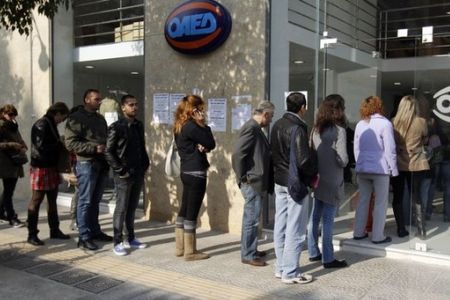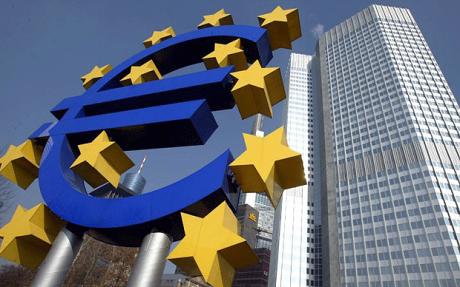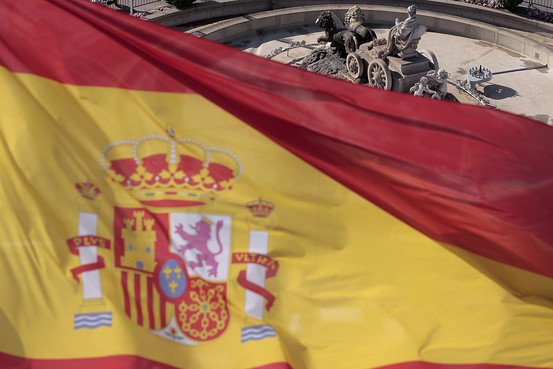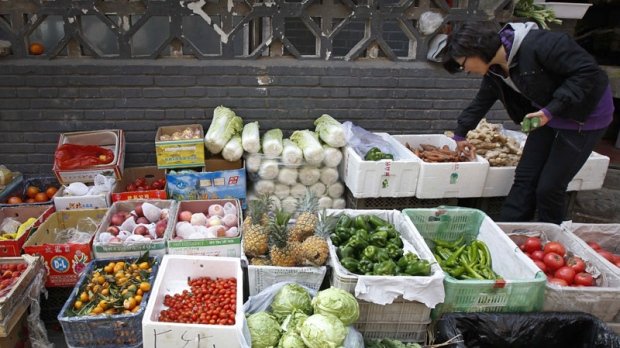Home Tags Posts tagged with "Recessions"
Recessions
Greece’s unemployment rate reached a record high of 28% in November 2013, according to newly released government figures.
The jobless rate increased from 27.7% in the previous month. For those under the age of 25, unemployment hit 61.4%.
Harsh austerity measures have led the Greek economy to shrink by a quarter in four years.
However, other economic indicators have suggested that there are signs of recovery.
Before Greece received its first 110 billion-euro ($150 billion) bailout in May 2010, the jobless rate was under 12% here.
Slight growth is expected this year and the deficit now wiped out, apart from interest payments on the bailout.

Greece’s unemployment rate reached a record high of 28 percent in November 2013
Greek unemployment is more than twice the average rate in the eurozone.
According to official EU figures, the number of people out of work in the single currency bloc in December was 19 million, with the jobless rate at 12%.
Other economic figures such as retail sales, manufacturing activity and construction, have pointed to signs that Greece’s recession has bottomed out.
However, Greece’s unemployment rate is expected to rise further in the first three months of 2014 as firms continue to restructure and cut jobs.
With 1.38 million people officially jobless, turning around the country’s economy will take time, even if the recovery does start this year as Athens hopes.
Before the crash when Greece was growing at up to 5% annually, about 50,000 jobs a year were added to the economy.
At these rates it could take more than 20 years to reduce the jobless totals – without measures to encourage domestic and foreign investment.
According to official figures, the US economy added 113,000 jobs in January, weaker than expected for a second consecutive month.
Economists had predicted an increase of about 180,000 new jobs last month.
However, the unemployment rate fell to 6.6%, the lowest level since October 2008, as more people began looking for work.

The US economy added 113,000 jobs in January, weaker than expected for a second consecutive month
The jobless figures will raise concern that, after a strong second half of 2013, growth in the US economy is beginning to lose its steam.
Earlier this week an unexpectedly weak manufacturing report raised concerns about the strength of the US economy and sent the Dow Jones tumbling by 326 points.
December’s surprisingly weak figure was revised up only modestly to 75,000, from 74,000.
The construction industry, most vulnerable to the impact of bad weather, added 48,000 in January indicating that while the weather may been responsible for December’s weak figures, it does not appear to have been a factor in January.
[youtube CLP1Y1_ju2c 650]
Eurozone’s economy grew by just 0.1% in Q3 2013, down from 0.3% growth in the previous quarter.
The figure marks just the second quarter of a growth phase that replaced an 18-month recession, the longest period of contraction to affect the single currency area.
It shows the eurozone’s recovery is extremely tentative.
Europe’s Central Bank last week cut interest rates to 0.25% to lift growth.
Europe’s economy is taking far longer to recover than the other advanced regions affected by the credit crisis of 2008.
Weaker countries in the eurozone have been propped up by bailout money, advanced on condition they cut government spending sharply to reduce their debts.
Moves to do this have hit directly at voters, through large-scale job cuts, reduced wages and pensions, higher taxes and widespread changes to public services.
With the resulting higher unemployment and fall in living standards, few economists think there is much there to drive forward a robust recovery.
Growth of 1.1% is being predicted by the European Commission for next year and 1.7% in 2015.

Eurozone’s economy grew by just 0.1 percent in Q3 2013
The US, with its own giant government debt, is currently growing at an annualized rate of 2.8%, compared with the eurozone’s rate so far this year of about 0.4%.
Even figures from the region’s strongest and most important economies, France and Germany, proved disappointing.
France shrank 0.1% in the third quarter of the year, while German growth slowed to 0.3% from 0.7% in the previous quarter.
Figures from Italy, the third most important country, showed its economy shrank by 0.1%, after a 0.3% contraction in the second quarter.
There were better signs of economic activity from some of the worst-hit countries in southern Europe.
Spain returned to quarter-on-quarter growth for the first time since the first quarter of 2011, albeit with growth of just 0.1%.
Portugal’s economy grew by 0.2% in the quarter.
When France’s economy grew by 0.5% in the second quarter of the year, it pulled the country out of recession, although economists had not expected that level of growth to be sustained.
Figures from the national statistics agency Insee showed that exports dropped by 1.5% in the third quarter, while business investment fell by 0.6%.
However, France’s Finance Minister, Pierre Moscovici, said he still believed the economy would grow by 0.1-0.2% over 2013 as a whole.
Germany’s statistics office Destatis also cited weak exports as a factor holding back growth.
[youtube rjb6CEx_mGs 650]
Spain is officially out of recession after first quarterly economic growth since 2011, according to data from the country’s National Statistics agency INE.
Spain’s GDP grew 0.1% in the July-to-September period, after contracting for the previous nine quarters.
Its growth confirmed last week’s estimates from the Bank of Spain.
Spain was one of the countries worst hit by the global economic crisis, with street riots and soaring unemployment.
The statistics mean Spain is officially out of recession.

Spain is officially out of recession after first quarterly economic growth since 2011
The INE said an increasing number of exports supported the growth, with a boost to the tourist industry from holidaymakers avoiding northern Africa and the Middle East.
Ben May, economist at Capital Economics, said the growth was encouraging and cited business surveys that suggested there “may be more to come in the near term”.
He said: “However, domestic demand is still contracting and against that backdrop, it’s hard to see a strong and sustained recovery.”
Spain’s economy has been ailing since its property bubble burst in 2008.
Its banks needed government bailouts from other European countries to survive, after they were left with hundreds of billions worth of euros in bad debts.
Since then, Spain has endured Europe’s highest level of unemployment, at 26%. There have been huge street protests in response to government austerity cuts and thousands of businesses have gone bust.
Spain’s government recently predicted the end of its recession was near, saying its reforms and cuts were paying off.
[youtube FzoBxiwlAZQ 650]
China’s consumer prices rose more than forecast in September 2013, fuelled mainly by a surge in food prices.
Prices rose 3.1% during September, from a year earlier, up from 2.6% in August, the National Bureau of Statistics said.
The bureau said that food prices rose 6.1% from a year ago due to the impact of national holidays, as well as droughts and floods in some regions.
Some analysts said that rising prices had reduced the chance of any major monetary policy moves by Beijing.
“The rise of consumer price index (CPI) inflation leaves little room for policy easing,” said Zhiwei Zhang, an economist with Nomura.
He added that prices were likely to rise further and that there was a risk the rate of inflation could even be above the government’s 3.5% target for some months in 2014.

China’s consumer prices rose more than forecast in September 2013, fuelled mainly by a surge in food prices
China, the world’s second-largest economy, has been trying to recover from a recent slump which has seen its growth rate slow for two quarters in a row.
Its economy expanded by 7.5% in the April-to-June quarter from a year earlier – down from a growth rate of 7.7% in the previous three months.
There have been concerns that its growth rate may slow further in the coming months, not least because of a slowdown in demand for Chinese exports from key markets such as the US and Europe.
While there have been some indications in recent weeks that its growth may be on the mend, data released over the weekend triggered concerns over whether the recovery was sustainable.
China’s exports, a key driver of its growth, fell 0.3% in September from a year earlier, indicating that external demand continues to remain fragile.
Zhou Hao, an economist with ANZ in Shanghai, said the weak export numbers show that “the economy faces some downward pressures”.
Meanwhile, imports rose a more-than-forecast 7.4% from a year ago.





